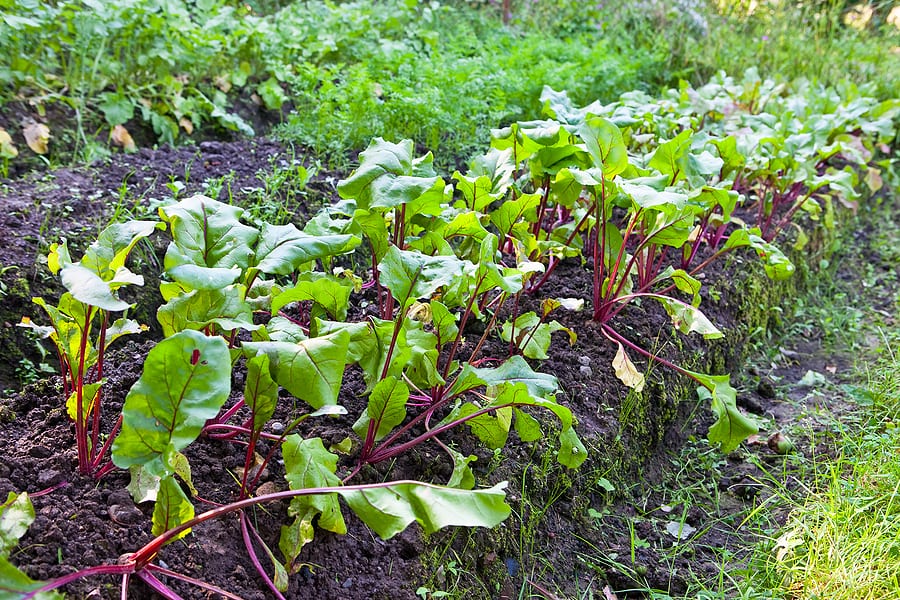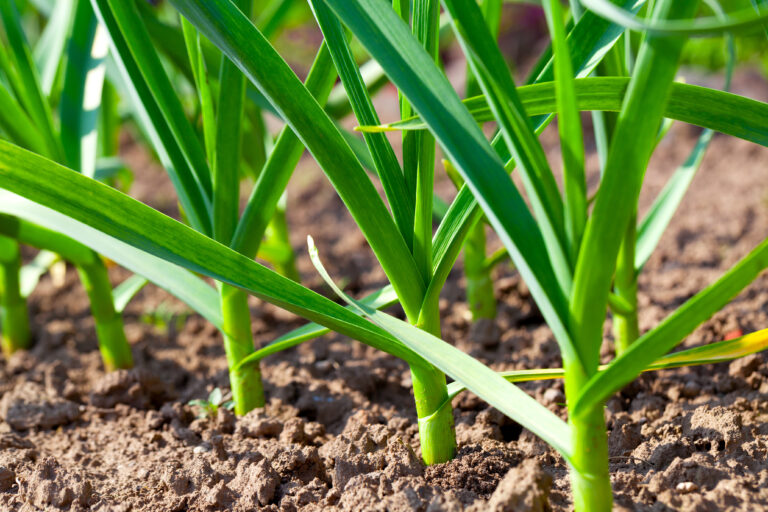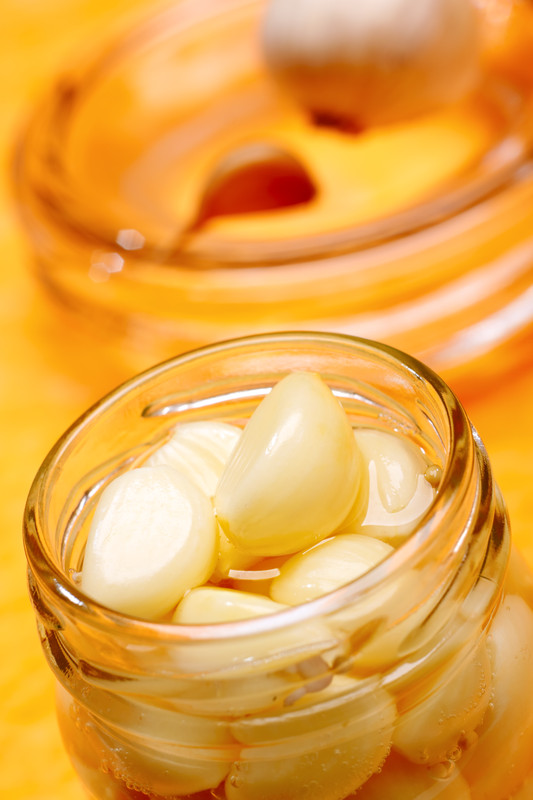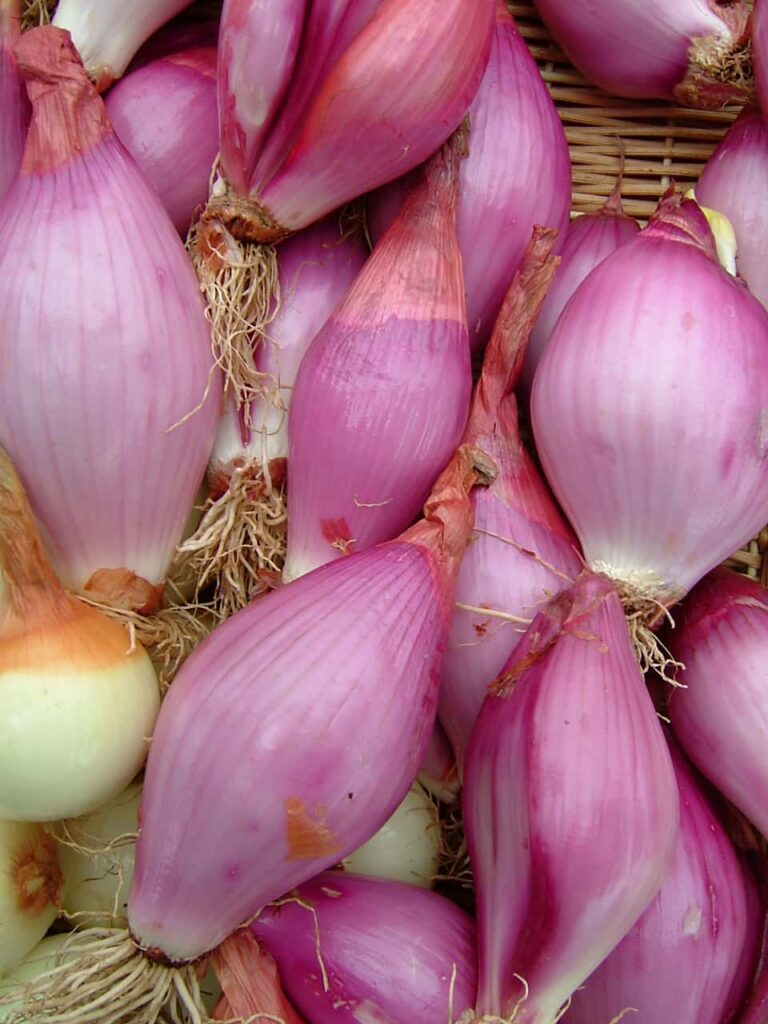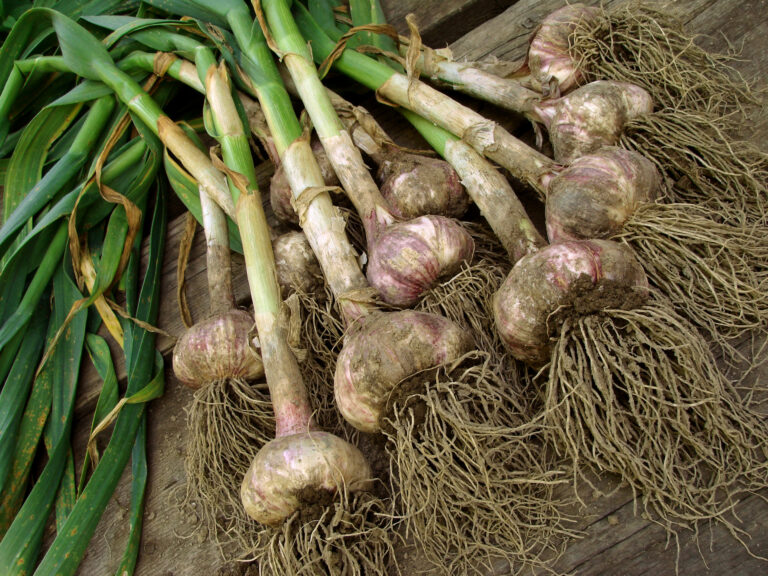Ultimate Guide to Growing Beets from Seed to Harvest
Beets are a cool-weather crop. Beets can again be planted 2 to 3 weeks before the last average frost date in spring or in late summer or early autumn 6 to 8 weeks before the first average frost in autumn. Beets can be grown as a winter crop in mild-winter regions.
Beets are biennial plants grown as annuals. They are grown for their swollen roots and also for their leaves. There are two main beet types: globe-shaped and long-rooted. Beetroots can be red, orange, gold, yellow, white, and even concentrically ringed roots. A rosette of large edible leaves sprouts from the root; green leaves can have red, yellow, or white veins.
Related articles:
- Seven Ways to Cook and Serve Beets
- Baby Beets Steamed, Baked, Pickled
- How to Plant and Grow Beets
- Beets Seed Starting Tips
- How to Harvest and Store Beets
- Beets and Swiss Chard Growing Problems Troubleshooting
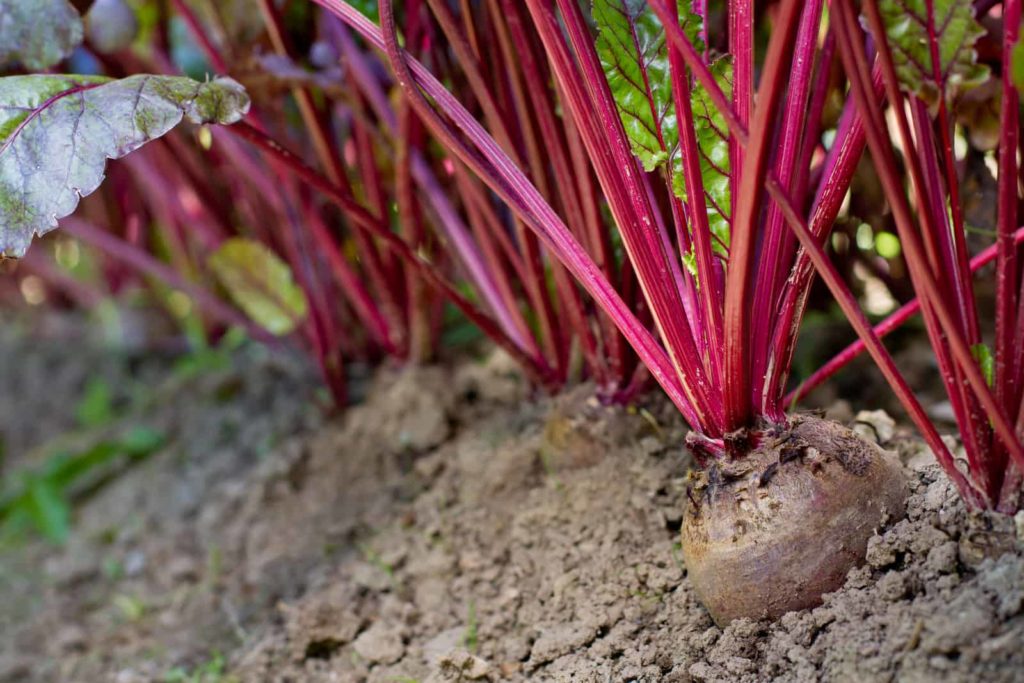
Here is your complete guide to growing beets!
Beets quick growing tips
- Beets thrive in moderate temperatures from 50°F to 65°F (10-18°C).
- Sow beets in the garden 2 to 3 weeks before the last average frost date in spring.
- Continue succession plantings every 3 weeks until temperatures reach 80°F (26°C).
- Beets require 45 to 65 days to reach harvest.
- Yield: Plant 5 to 10 beets per household member. Yield can vary by variety. You will likely harvest about 15 pounds (7kg) of beets per 10 feet (3m) of row.
Where to plant beets
- Grow beets in full sun or partial shade in warm regions.
- Grow beets in a dedicated bed or plant them along the edge of the planting bed.
- Plant beets in well-worked loose soil rich in organic matter. Be sure to remove all stones and clods from planting beds so as not to impede or split growing roots.
- Add plenty of aged compost to growing beds in advance of planting; this will increase the yield. Alternatively, add 3 cups (700ml) of dried seaweed per 100 square feet (9 sq m).
- Beets grow best where the soil pH is 6.0 to 6.8; the ideal soil pH is 6.5.
- Add only aged manure to the soil; fresh manures are high in nitrogen and cause beetroots to fork, twist, or be “hairy.”
- If you have alkaline (chalky) or recently limed soil, the soil could be deficient in boron. Carefully sprinkle 1 to 1.5 tablespoons (6-9g) of household borax along 100 feet (30m) of row and work it into the soil. Do not overuse borax; it can be toxic.
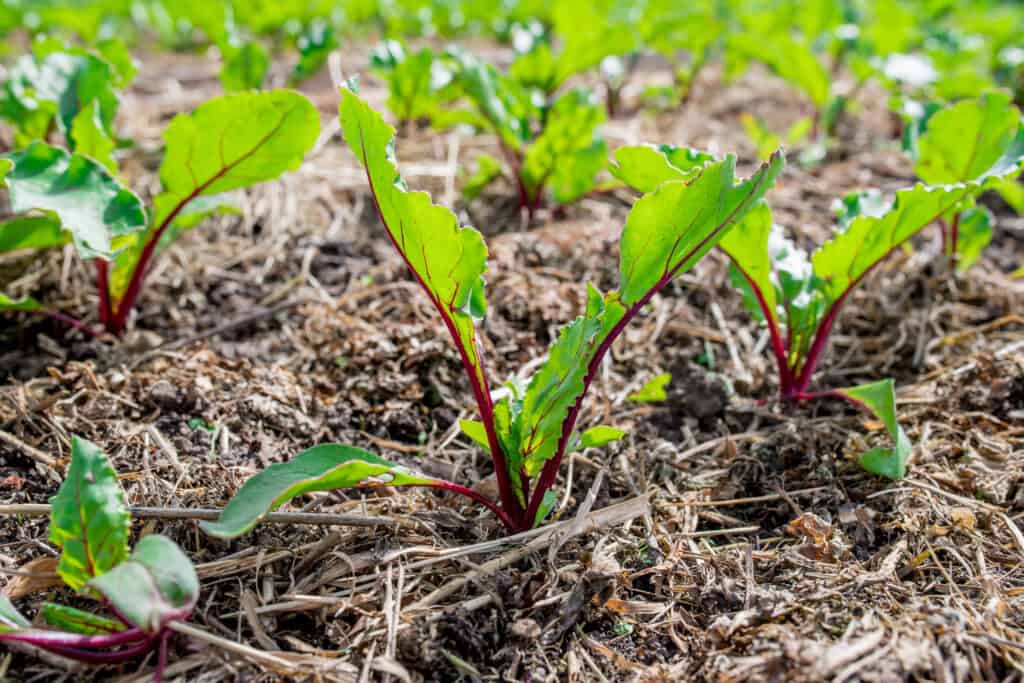
When to plant beets
Grow beets to harvest in cool but not cold weather. Beets grow best when the days are warm (60° to 70°F) and nights are cool (50° to 60°F).
- In cold winter regions, plant beets in the garden in early spring or late summer for harvest when temperatures are in the 50°s and 60s°F
- In mild-winter regions where temperatures do not drop below 50°F for extended periods, plant beets in the garden in fall for winter harvest.
- Undercover in winter—where temperatures drop below 50°F during the day, grow beets under a plastic tunnel or in a cold frame.
Planting beets in spring
- Sow beets in the garden 2 to 3 weeks before the last average frost date in spring.
- The soil temperature should be at least 50°F (10°C), especially if you have experienced damping-off disease.
- Beets will grow faster in spring when covered with a row cover which will provide protection from chilling temperatures and wind.
- For an early start, sow beet seeds indoors 6 to 8 weeks before the last spring frost; harden off and transplant outside 4 weeks later.
- Soak seeds in warm water overnight before planting; this will speed germination.
- Beet seeds are large; a beet seed is actually a cluster of two to five seeds known as a multigerm. You do not need to break beet seed clusters apart; instead, thin seedlings grow close together.
Succession planting beets
- Beets require 45 to 65 days to reach harvest.
- Beets can be planted in succession from early to late spring and again in late summer and fall.
- Continue succession plantings every 3 weeks until temperatures reach 80°F (26°C).
- In hot-summer regions, stop sowing 60 days before the summer heat arrives. In hot weather, beetroots will become woody.
- As beets are harvested, you can sow new beet seeds or set out transplants to fill the spot.
- Include beets in your root crop rotation in spring and autumn.
Planting beets for autumn harvest
- Beets can again be planted in late summer or early autumn 6 to 8 weeks before the first average frost in autumn. This will be the fall and winter storage crop, so sow only once, planting as much as you will need for winter.
- When direct sowing during summer, keep the soil constantly moist or germination will be poor.
Planting beets for winter harvest
- Grow beets as a winter crop in mild-winter regions. Late plantings that mature through winter will be the sweetest because the roots store sugars during cool weather.
- Beets can tolerate frost but will go to seed if temperatures are too cold.
More details: Planting Beets.
Planting and spacing beets
- Beets are grown from seed clusters about the size of a small pea. Each cluster contains several tiny true seeds. Presoak seed clusters for 12 hours before sowing to help speed germination.
- Sow seed clusters 1 inch (2.5cm) deep and 1 inch apart. Seeds can be broadcast. Broadcast seeds lightly over a 15 to 18-inch (38-45cm)-wide bed. Seedlings will need to be thinned once they are about 5 inches tall (thinned plants can be eaten as greens).
- Seedlings will sprout in clumps. Use small scissors to thin successful seedlings to 4 to 6 inches (10-15cm) apart when seedlings are 3 inches tall. Alternatively, you can gently separate young seedlings and replant the extra seedlings in a row nearby.
- Space rows 12 to 18 inches (30-45cm) apart. Add thinned seedlings to salads. Beets generally do not transplant well.
- Starting beet seeds indoors: If you start seeds indoors, sow one seed cluster per peat pot and thin seedlings to one plant per pot when the first true leaves emerge. Start seeds in a sterile seed starting mix. Use a seed-starting heat mat to warm the soil to between 60°F and 85°F to speed germination. Use a grow light and turn pots or trays every couple of days until plants are ready to go in the garden.
- Planting Transplants: Because beet seeds will not germinate in heavy clay soil, transplants are a better choice. Set each seedling at the desired final spacing. Be very careful on to harm the roots when transplanting beet seedlings.
More tips: Beets Seed Starting Tips.
Companion plants for beets
- Plant beets with onions and kohlrabi.
- Do not plant with pole beans and shading crops.
Container growing beets
- Beets can be grown in containers. Thin seedlings to 4-inch (10cm) centers.
Watering beets
- Keep beets evenly watered. Do not let the soil dry out. Lack of water will cause roots to become stunted, stringy, and tough.
- Beets need about 1 inch of water each week; that is equivalent to 6 gallons per square yard.
- Use the finger test: push your index finger into the soil if comes out dry, it’s time to water.
- Add aged compost to planting beds in advance of seeding.
Feeding beets
- Side dress beets with compost at midseason.
- Do not fertilize feeds with a high-nitrogen fertilizer; that will result in leaf growth and poor root growth.
- Fertilize beets when sprouts first appear and again one month later. Follow the manufacturer’s recommendation; less fertilizer is better than more fertilizer.
Caring for beets
- Mulching beets: To conserve soil moisture and keep down weeds, water the beets well and then put down a layer of mulch between the rows at least 4 inches (10cm) deep. If slugs are a problem, wait until the plants are a few inches tall before mulching. Mulching around beets will keep the sun off of root tops. Beetroots exposed to the sun will be less flavorful.
- Hilling beets: As beetroots grow, the roots can push themselves out of the ground, so hill up soil around roots as necessary.
- Weeding near beets: If weeds grow near beets, remove them by hand rather than using tools. A hoe or trowel can nick the developing beetroots and expose them to disease. Keep planting beds weed-free to avoid competition for water and nutrients.
- Thinning beets: Thin beets as soon as they are about 3 inches (7.6cm) tall to avoid crowding which can hinder root growth.
- Young plants go to seed: If young plants flower and go to seed it is likely caused by temperatures below 50°F (10°C) or lack of moisture. Adjust the planting time to avoid cold exposure; keep the soil consistently moist.
Beetroot problems
- Black spots or brown hearts in roots can be caused by a lack of boron in the soil. Cut away the discolored parts and the rest is edible. If the soil is chalky or has been recently limed, rake boron into the soil, 1.5 teaspoons per square yard, or feed plants with calcified seaweed.
Beet pests
- Ragged holes in leaves may be caused by slugs, beet armyworms, or garden webworms; handpick caterpillars of spray with BTK when small; trap and kill slugs.
- Spinach leafminer larvae can tunnel through leaves; cover newly planted areas with row covers to prevent damage.
- Aphids feed on beet leaves; their excrement is called “honeydew” which attracts ants. Knock aphids from plants with a steady stream of water or use insecticidal soap.
- Cutworms feed on beetroots and stem; the larvae can be hand collected or killed by diatomaceous earth.
Beet diseases
- Brown spots on leaves can be caused by Cercospora leaf spots; pick and destroy affected leaves; roots are edible.
- Powdery mildew is a fungal disease that leaves a white dusty coating on leaves. Spray with a fungicide and avoid overhead watering.
Beet pests and disease help: Beet Growing Problems: Troubleshooting.
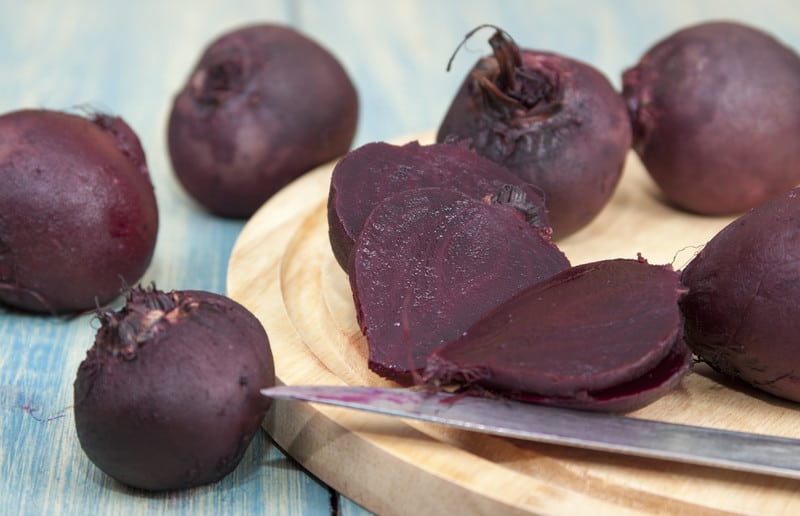
Harvesting and storing beets
Young beets can be harvested when 1 inch in diameter (small beets can be cooked stem and all). Larger beets can stay in the ground until just after the first hard frost. Beet greens can be used as early as the first thinning of the planting bed. Beets for storage should be kept in the refrigerator or a cool basement or root cellar.
- Beets will reach harvestable size–1 to 3 inches (2.5-7.6cm) in diameter–40 to 80 days after sowing.
- To check to see if beets are large enough for harvest, gently move the soil away from the shoulders of the roots to check the root diameter. Check seed packets for recommended root size at harvest.
- Lift beets gently. Twist the leaves off rather than cutting them off to prevent juices from bleeding.
- Baby beets are ready for harvest about 40 days after planting. Full-size beets will be ready about 2 to 3 weeks later. Roots about the size of a golf ball will have optimal flavor. ‘Lutz Greenleaf’ variety will be flavorful when as large as a softball. Golden beets will be flavorful when the size of a baseball.
- Beets left in the ground past maturity will become woody and tough and lose flavor.
- Young beet green tops can be cut for salads about one month after planting. Don’t harvest too much foliage while the root is developing. Rinse the greens to remove grit before cooking or serving.
Storing and preserving beets
- Beets will keep in the refrigerator for 1 to 3 weeks. Remove soil from roots before storing, but it is not necessary to wash the roots until just before use.
- Beet greens will keep in the refrigerator in a plastic bag for up to 1 week.
- Unwashed beets will keep for 1 to 3 months in damp sawdust in a cold, moist place. Beets can be frozen and dried.
- For long-term storage, you can pack beets in containers of moist sand or peat and keep them in an unheated basement or garage (40-50°F/4.5-10°C is ideal). Small beets will not store as long as larger beets.
- In cold-winter regions, you can store beets in an outdoor pit lined with dry leaves and straw. Layer the beets on top of a bed of straw, then cover them with a heavy layer of straw.
More harvest tips: How to Harvest and Store Beets.
Beets in the kitchen
Beet roots and greens can be eaten raw, steamed, braised, or stir-fried.
- Beets can be roasted, boiled, grilled, baked, or pickled.
- Beets can be grated, cut into wedges, and julienned like French fries.
- Serve beets alone or tossed in a salad.
- Ukrainian beet soup is called borscht.
- Sauté beets for five minutes then steam for five more minutes; combine with onion, cabbage greens, and carrots.
- Pair beets with fruit: combine sliced steamed beets with chopped apples, toasted walnuts, and fresh greens.
- Add fresh-cooked, pureed beets to chocolate cake batter for an extra-moist treat.
- Beet tops, called beet greens, can be sauteed or added to a soup.
Beets frequently asked questions
Q: How should I plant beet seeds?
Beet seeds come in clusters so sow thinly, about 10 seeds per foot. Sow beet seeds 1 inch deep. You can plant up to a month before the last frost date. Beets are one of the few root crops that grow well from transplants. You can keep planting every two weeks until midsummer, and then again 6 to 8 weeks before the first frost. Beets grow best in light, sandy soil.
Q: When should I start harvesting beets?
A: Thin beets when the green and young roots are about the size of a quarter–about 1 inch. You can eat the thinnings–baby beets. Harvest greens anytime with the “cut-and-come-again” approach. Harvest larger beets when they are 2 to 3 inches across; don’t let the roots get bigger, as they will become woody and tough. In warm climates, beets can be left in the ground in the fall and harvested through the winter as needed.
Q: What causes beets to be flavorless?
A: Hot weather can ruin beetroots. Harvest roots before the hot summer weather in the meantime try to keep the roots cool and moist.
Beet varieties to grow
Beet varieties well-suited for backyard gardens include red beets, white beets, golden beets, and red-and-white striped beets Choose also from beets with tasty greens, baby beets, and beets the size of a baseball. Here are recommended best beets for backyard growing:
Choose a beet variety that meets your needs and that will be ready for harvest after a hard frost in early spring or before a hard frost in autumn. The best root size for flavor is listed for most.
- Beet Varieties. ‘Detroit Dark Red’ (52 days); ‘Early Wonder’ (53 days); ‘Burpee’s Golden’ (55 days); ‘Bull’s Blood’ (50 days); ‘Ruby Queen’ (56 days); ‘Little Ball’ (56 days); ‘Cylindra’, also called ‘Formanova’ or ‘Tendersweet’ (60 days); ‘Long Season’ also called ‘Winter Keeper’ (80 days).
- ‘Albina Vereduna’: 50 to 60 days to harvest; pure white Dutch heirloom; has twice as much sugar as red beets.
- ‘Avalance’ is an open-pollinated white beet inside and out. It is an All-America Selection winter; grows from seed in 55 days.
- ‘Baby Ball’: 50 days to harvest; round, petite crimson root; subtle sweet flavor, tasty greens; harvest small.
- ‘Bolder’ is a golden-colored beet that is bright yellow inside; root diameter is 2 to 3 inches; grows from seed in 55 days.
- ‘Bull’s Blood’: 50 to 60 days to harvest, pick greens in 35 days; heirloom, dark maroon-red leaves; flavorful roots; very cold hardy.
- ‘Burpee’s Golden’ has sweet golden flesh which is nonstaining; the greens can be used for cooking or salads; grow from seed in 55 days.
- ‘Chioggia’ is an Italian heirloom that has sweet roots with rings of red and white when sliced; use the greens in place of spinach; 2-inch roots are round and semi-flat; grow from seed in 54 days.
- ‘Cylindra’ has long dark red roots which are ideal for pickling; ready for harvest 60 days from seed.
- ‘Detroit Dark Red’: 60 to 65 days to harvest; heirloom dating from 1892; sweet roots and tasty greens; use fresh or canned.
- ‘Early Wonder Tall Top’ is an open-pollinated variety that matures in 45 days; grows best in early spring; deep red round roots are 3 to 4 inches in diameter; green leaves appear on purple stems.
- ‘Golden Beet’: 50 to 60 days to harvest; bright yellow flesh, sweet-potato-like flavor; not as productive as red varieties.
- ‘Kestrel’: 50 to 55 days to harvest; dark red baby beet; harvest small; bolt resistant.
- ‘Lutz Green Leaf’ is a good choice for winter storage; it has a dark red root and tasty greens; ready 70 to 80 days from seed sowing.
- ‘Red Ace’ is fast growing hybrid with sweet round roots 3 to 4 inches in diameter and tasty greens; it is resistant to leaf spot; ready 50 to 55 days from seed.
- ‘Ruby Queen’ is an open-pollinated beet about 3.5 inches in diameter; deep red inside with pink rings. Grow to maturity in 65 days.
- ‘Subeto’ is a smooth-skinned round red beet that grows to 1.5 inches in diameter; grows to maturity in 50 days.
- ‘Winterkepper’, also called ‘Lutz Greenleaf’: 70 days to harvest; heirloom; large tasty leaves, baseball-size roots are sweet and tender; stores well through winter.
- ‘Zeppo’ is a mild-flavored hybrid with uniform, round red roots to 2 inches in diameter; grows to maturity in 50 days
About beets
- Common name. Beet, beetroot (United Kingdom), garden beet, red beet, beet greens
- Botanical name. Beta vulgaris (Swiss chard and sugar beets are related to beets)
- Origin. Southern Europe
- Beet cultivars: Beets come in all shades of red; new cultivars are yellow or white on the inside.
Beets Growing Hub
Start here: Ultimate Guide to Growing Beets from Seed to Harvest
1. Getting Started (Timing, Planting, Varieties)
- When to Plant Beets: Timing by Season and Region
- Beets Seed Starting Tips
- Thinning and Spacing Beets for Better Roots
- Beet Varieties for Small Spaces and Containers
- Best Beet Varieties for Sweet Flavor and Tender Texture
2. Growing & Care
- Best Companion Plants for Beets (And What to Avoid)
- How to Fertilize Beets for Root and Leaf Growth
- How Much Water Do Beets Need? A Watering Guide
- How to Grow Beets in Raised Beds and Containers
- Growing Beets in Hot Weather: Challenges and Solutions
- Succession Planting Beets for a Continuous Harvest
3. Problems & Troubleshooting
- Why Are My Beets Not Forming Roots? Common Growing Problems Solved
- Beets and Swiss Chard Growing Problems: Troubleshooting
4. Harvest, Storage & Kitchen Use
- How and When to Harvest Beets for Best Flavor
- How to Harvest and Store Beets
- Seven Ways to Cook and Serve Beets
Beets articles at Harvest to Table:
How to Harvest and Store Beets
Beets and Swiss Chard Growing Problems: Troubleshooting
Seven Ways to Cook and Serve Beets
Baby Beets, Baby Carrots, and Sugar Snap Peas Salad
Baby Beets: Steamed, Baked, Pickled
More how to grow articles:
Learn how to plant, grow, and harvest your favorite vegetables. Click below for all you need to know.
- Artichoke
- Arugula
- Asparagus
- Beans, Snap
- Beets
- Broad Beans
- Broccoli
- Brussels Sprouts
- Cabbage
- Cantaloupe — Melons
- Cardoon
- Carrots
- Cauliflower
- Celeriac
- Celery
- Chard
- Chayote Squash
- Chickpeas
- Chicory
- Chinese Cabbage
- Collards
- Corn Salad
- Corn, Sweet
- Cresses
- Cucumbers
- Eggplant
- Endive and Escarole
- Fava Beans
- Florence Fennel
- Garbanzo Beans
- Garlic
- Horseradish
- Jerusalem Artichoke
- Kale
- Kohlrabi
- Leeks
- Lettuce
- Lima Beans
- Melons
- Mizuna
- Mustard Greens
- New Zealand Spinach
- Okra
- Onions
- Parsnips
- Peanuts
- Peas
- Peppers
- Potatoes
- Pumpkins
- Radicchio
- Radishes
- Rhubarb
- Rutabaga
- Salsify
- Shallots
- Sorrel
- Southern Peas
- Soybeans
- Spinach
- Squash, Summer
- Squash, Winter
- Sunchokes
- Sweet Potato
- Swiss Chard
- Taro
- Tomatillo
- Tomatoes
- Turnips
- Watermelon
- Zucchini
Garden Planning Books at Amazon:
- Vegetable Garden Almanac & Planner
- Kitchen Garden Grower’s Guide Vegetable Encyclopedia
- Vegetable Garden Grower’s Guide
- Tomato Grower’s Answer Book
Grow 80 vegetables:THE KITCHEN GARDEN GROWERS’ GUIDE

